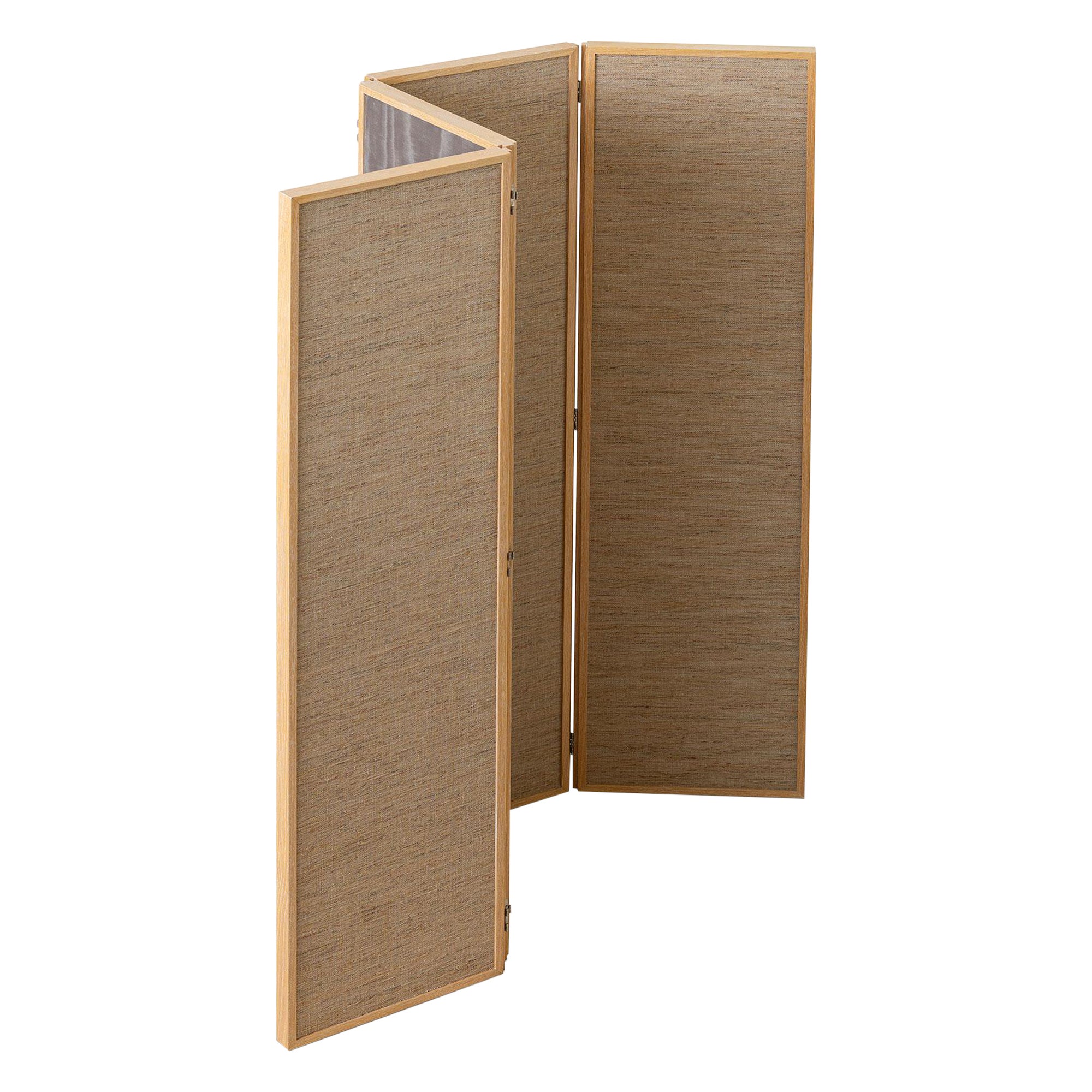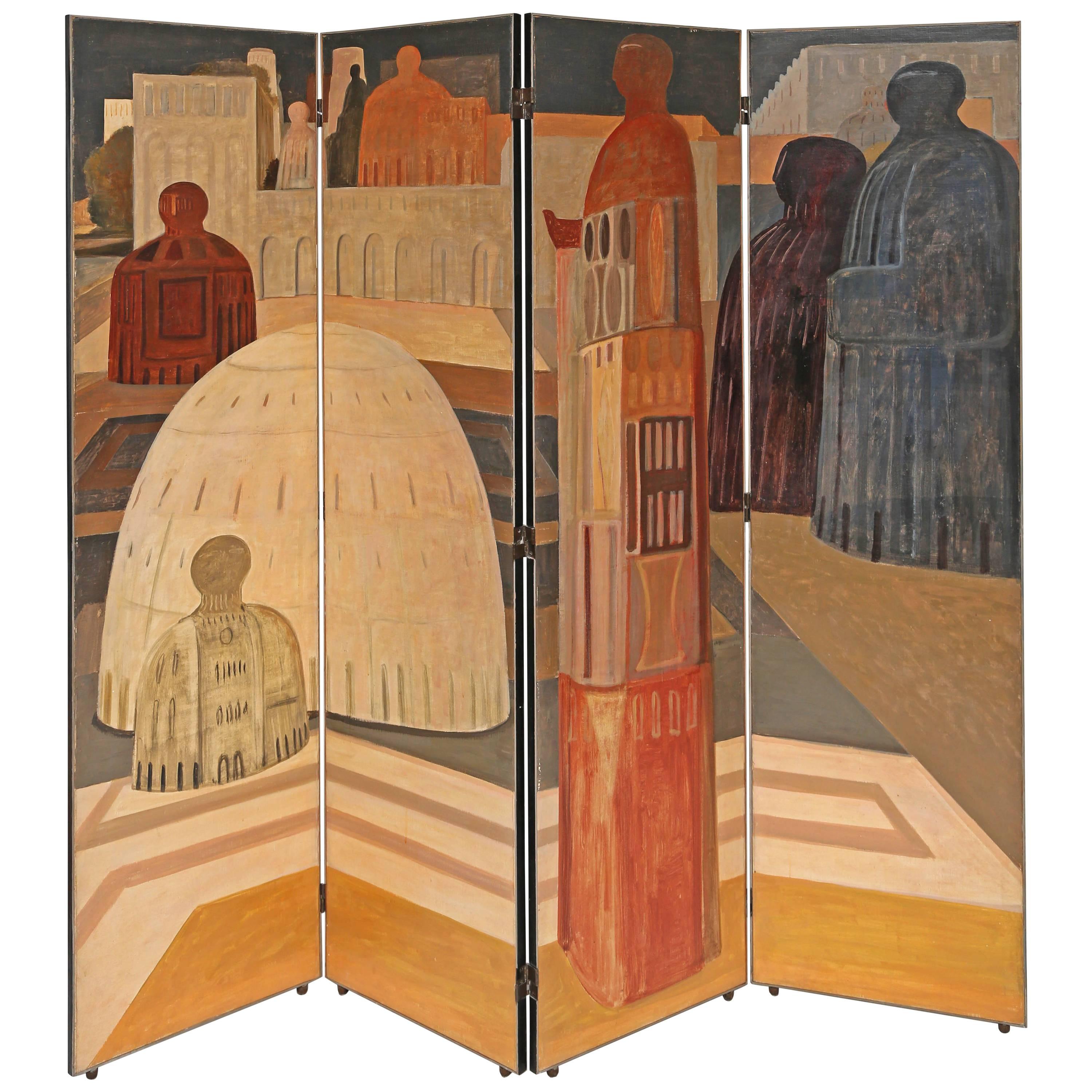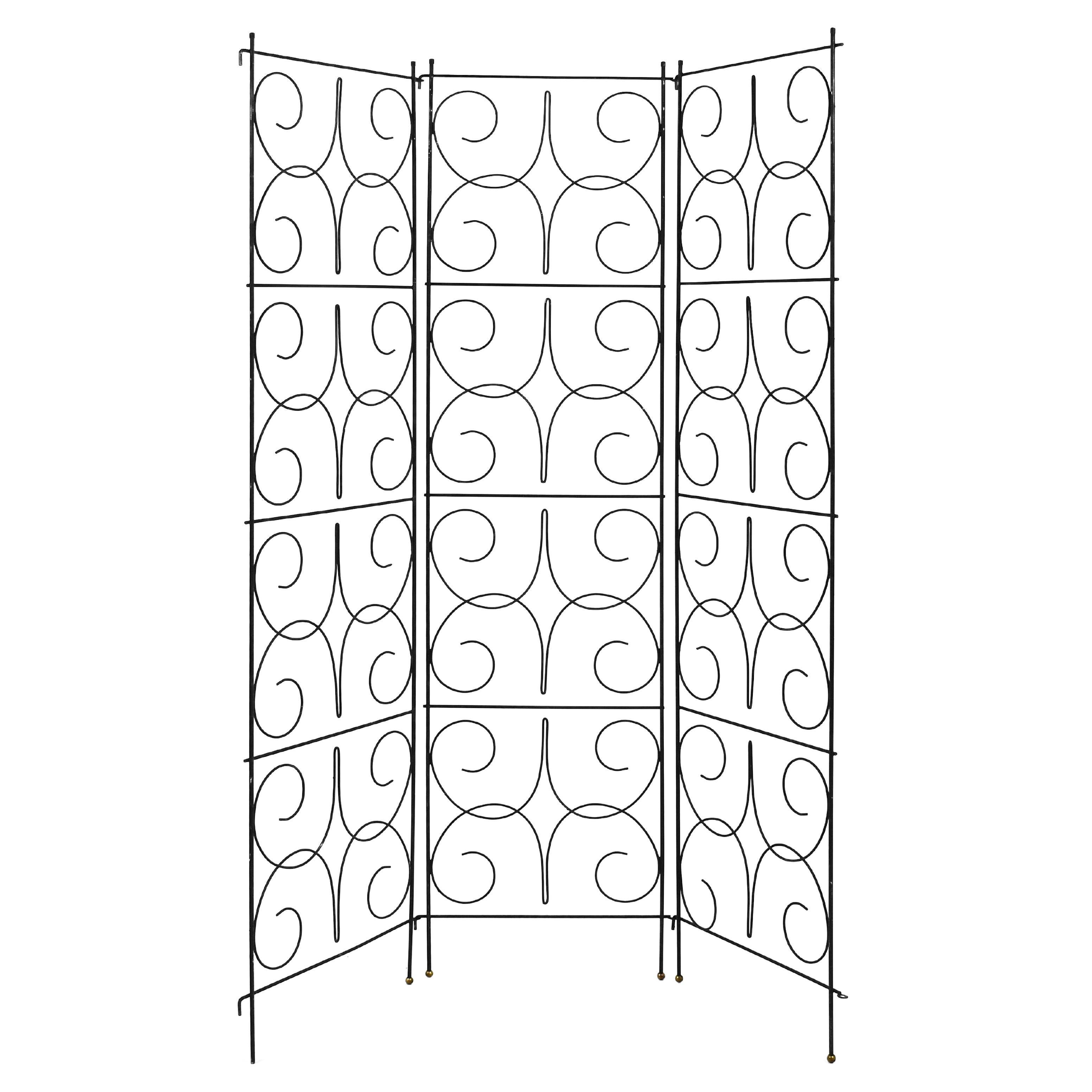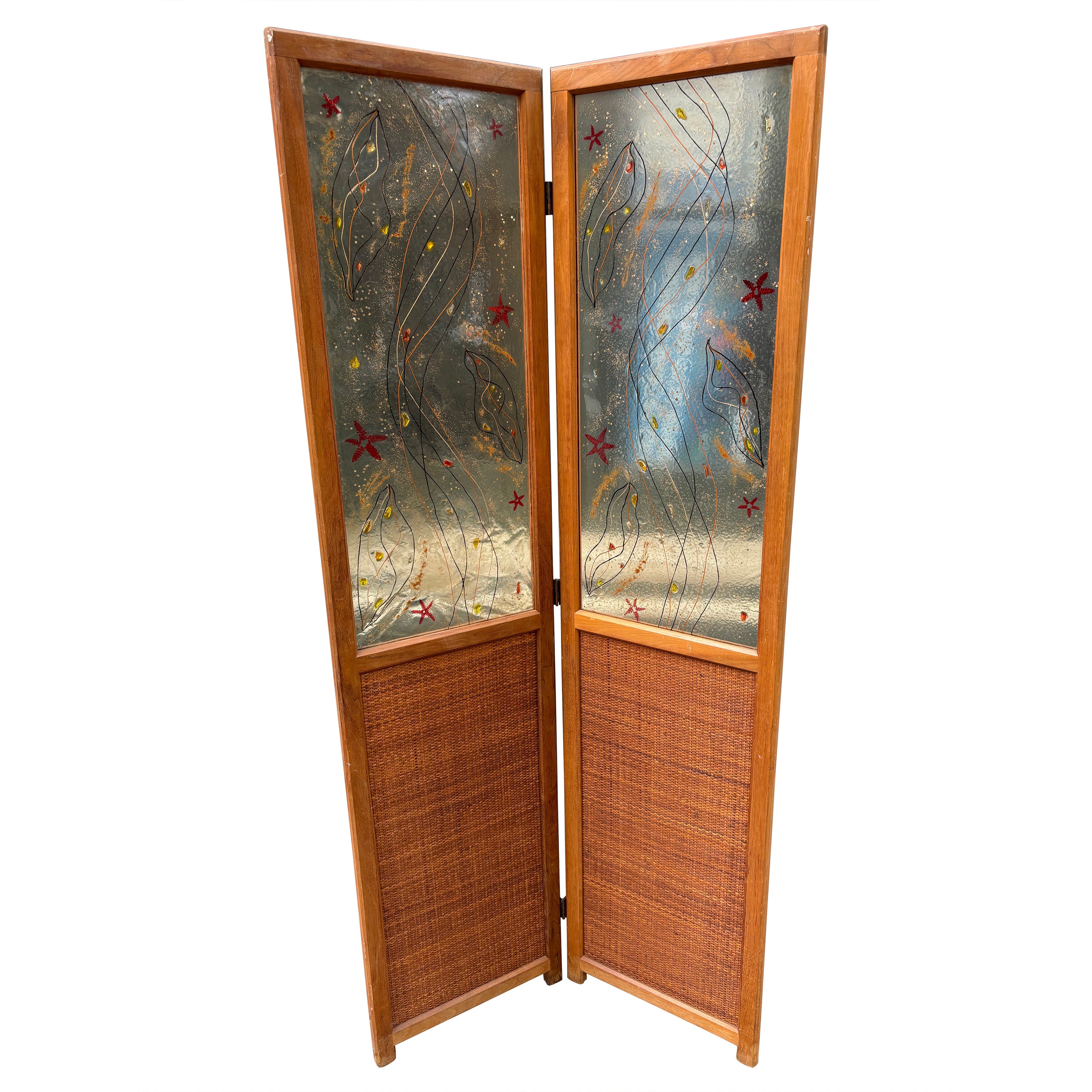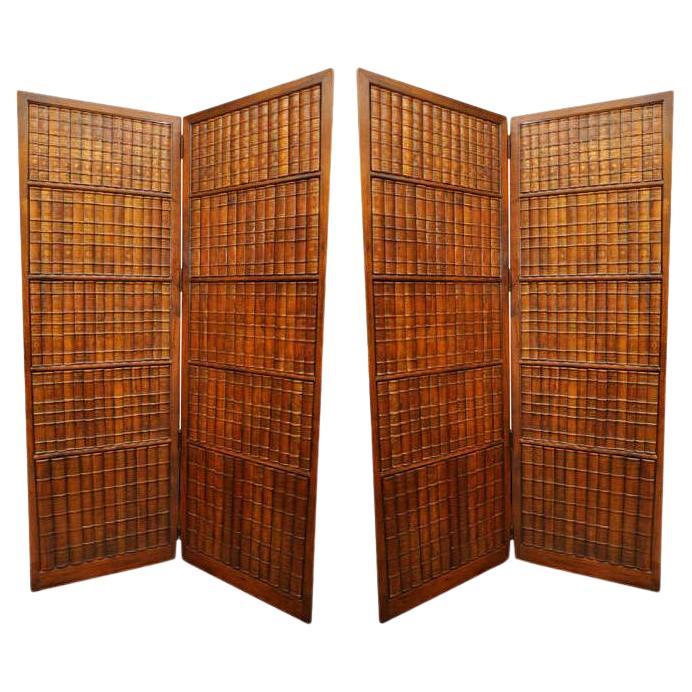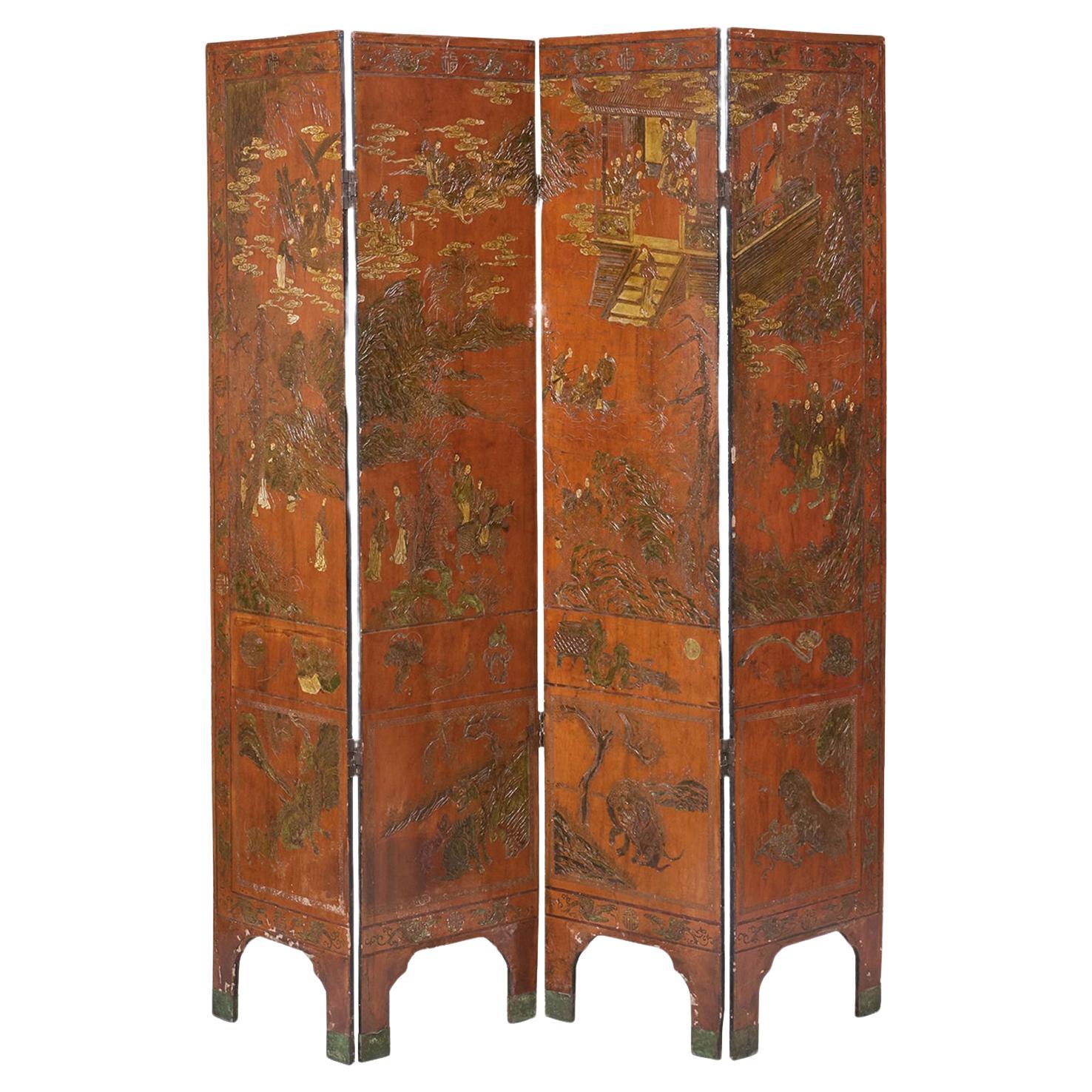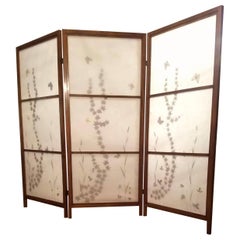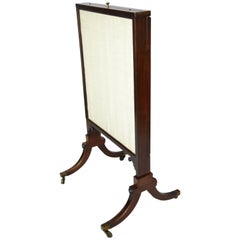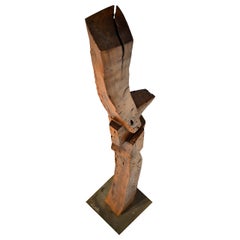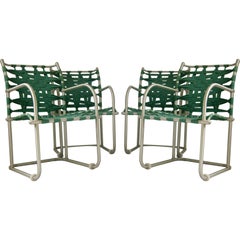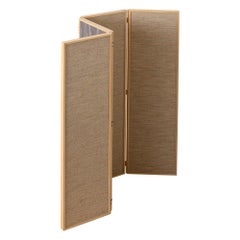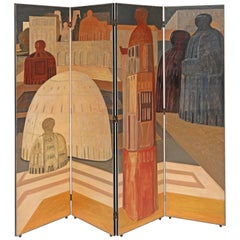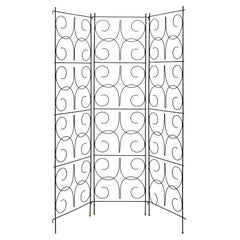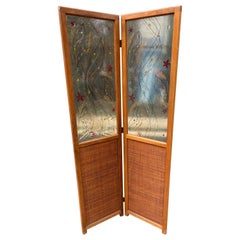Items Similar to Salvador Corona Folding 4 Panel Floor Screen of Patzcuaro, Acapulco circa 1938
Want more images or videos?
Request additional images or videos from the seller
1 of 10
Salvador Corona Folding 4 Panel Floor Screen of Patzcuaro, Acapulco circa 1938
About the Item
Salvador Corona painted four-panel wooden floor screen created in his studio in Mexico circa 1938.
This rare hand crafted multi medium room divider was the property of the daughter of one of Mexico's wealthiest families of the period, who married the head of an international railroad supply company in their Warren McArthur furnished apartment on Park Avenue.
The custom designed Warren McArthur furniture was a gift of the Pullman Company.
In the early 1950s she opened a shop in Boothbay, Maine and later on upper Lexington Avenue specializing in the crafts of Mexico.
This may have been a wedding present to her from the artist, her family or a close friend.
The screen shows a the harbor of 19th Century Acapulco with the major buildings with gold leaf tiled roofs, Spanish galleons in the bay, a whale spouting in the distance, birds, and silver leafed palm trees .
The harbor scene is bordered in gilt painted cord. Within which are appliquéd cutout medallions of various local fish and air bubbles covered in tinfoil ,a new material in the 30s. The tinfoil is finely etched in a variety of intricate patterns. Some of the appliqués are glazed in gold.
The reverse side of the screen is an ivory white back ground with vignettes from the Maximilian era of Mexico.
The screen is in good condition with wear consistent with its age.
Salvador Corona was born on his family's ranch Hacienda Mideras in the Mexican state of Chihuahua. Corona’s family moved to Mexico City in 1903 when he was 8. He attended the New English College in Mexico and then crossed into a career in bull fighting entering the ring for the first time in 1913. In 1919 in Guadalajara he was gored and turned to painting.
He was given his first painting lessons by fellow bullfighter Jose Jimenez.
Corona’s painting career spanned many decades and diverse formats including murals, furniture and decorative household items.
In 1939, the Mexican government invited him to exhibit a set of painted furniture at it's booth at the World’s Fair in New York City. There, it was presented to President Franklin D. Roosevelt as a gift. Corona’s work attracted many famous patrons, including the Duchess of Windsor, Gary Cooper and writer Clare Booth Luce.
Salvador Corona’s work featured many Spanish Colonial vignettes, and he became an authority on Spanish and French costumes of the 1800s, which are frequently depicted in his paintings. His favorite subjects often included Mexican Colonial criollos and Purepecha (Tarascan) Indians. Birds and other animals feature prominently in his work.
His traditional self-developed folk art style images depicted pastoral colorful scenes of Maximilian era Mexico painted on white backgrounds.
His work can be divided into three categories: a vice-regal era with European and Creole noblemen mixed with Indians; stylized landscapes of Patscuaro, Acapulco or the Canal of Santa Anita; and his iconographic Mexican Virgins painted in tones of blue, purple, and gold often encrusted with mother of pearl.
Corona moved to Tucson in 1950. His studio and residence was located at 1701 East Speedway Boulevard, and then 902 North 4th Avenue overlooking Catalina Park.
- Creator:Salvador Corona (Artist)
- Dimensions:Height: 72 in (182.88 cm)Width: 72 in (182.88 cm)Depth: 1 in (2.54 cm)
- Style:Rancho Monterey (Of the Period)
- Materials and Techniques:
- Place of Origin:
- Period:
- Date of Manufacture:1938
- Condition:Wear consistent with age and use. Minor fading. Excellent vintage condition.
- Seller Location:Camden, ME
- Reference Number:Seller: App 4971stDibs: LU89843746562
About the Seller
5.0
Gold Seller
Premium sellers maintaining a 4.3+ rating and 24-hour response times
Established in 1984
1stDibs seller since 2010
230 sales on 1stDibs
Typical response time: <1 hour
- ShippingRetrieving quote...Shipping from: Camden, ME
- Return Policy
Authenticity Guarantee
In the unlikely event there’s an issue with an item’s authenticity, contact us within 1 year for a full refund. DetailsMoney-Back Guarantee
If your item is not as described, is damaged in transit, or does not arrive, contact us within 7 days for a full refund. Details24-Hour Cancellation
You have a 24-hour grace period in which to reconsider your purchase, with no questions asked.Vetted Professional Sellers
Our world-class sellers must adhere to strict standards for service and quality, maintaining the integrity of our listings.Price-Match Guarantee
If you find that a seller listed the same item for a lower price elsewhere, we’ll match it.Trusted Global Delivery
Our best-in-class carrier network provides specialized shipping options worldwide, including custom delivery.More From This Seller
View AllJapanese Floor Screen Shoji Paper Natural Elements Elmwood Frame, 1950-1960
Located in Camden, ME
A Japanese three panel folding floor screen framed in Japanese Elmwood each panel encasing a large single Washi paper sheet with natural inclusions from Japan created in the 50's/60s...
Category
Mid-20th Century Japanese Mid-Century Modern Screens and Room Dividers
Materials
Elm, Paper
Mahogany Fireplace Screen 19th Century Antique American Sheraton circa 1830
By Thomas Sheraton
Located in Camden, ME
Unusual American mahogany extendable fireplace screen in the style of Thomas Sheraton.
The classically styled mahogany frame with ebonized ...
Category
Antique Mid-19th Century English Sheraton Screens and Room Dividers
Materials
Mahogany
Hand-Carved Studio Mesquite Stele in the Style of J. B. Blunk, circa 1970
By J. B. Blunk
Located in Camden, ME
An interesting twisted column carved from a single piece of Mesquite in the reductive style of J. B. Blunk.
From an estate located in the California mid coast possibly from an artis...
Category
Vintage 1970s American American Craftsman Sculptures
Materials
Wood
$5,200 Sale Price
20% Off
Warren McArthur Set of Four Webbed Lounge Chairs Style No. 612, circa 1938
By Warren McArthur
Located in Camden, ME
Warren McArthur rare suite of four webbed anodized aluminum armchairs from a Long Island New York estate.
Light weight anodized aluminum frames with original webbing distinguish these lounges. This design was known as the tennis chair...
Category
Vintage 1930s American Art Deco Armchairs
Materials
Aluminum
Warren McArthur Pair of Matched Sofas Model 917-3 s C. 1938
By Warren McArthur Corporation, Warren McArthur
Located in Camden, ME
A Warren McArthur Corporation matched pair of model 917-3 3-seater sofas from the late 30s.
The sofas are upholstered in an off white boucle with "tootsie roll" armrests.
The design...
Category
Mid-20th Century American Machine Age Sofas
Materials
Aluminum
Pair of Aluminum Warren McArthur Sling Chaises / Lounge Chairs, 1938
By Warren McArthur, Warren McArthur Corporation
Located in Camden, ME
Pair of lounge chairs by Warren McArthur manufactured at his factory in Connecticut in the late 1930s.
The designs that Warren introduced in the very beginning of his furniture making he referred to as "suspension chairs...
Category
Mid-20th Century American Bauhaus Chaise Longues
Materials
Aluminum
You May Also Like
Contemporary 4 Panel Folding Screen
By DING DONG
Located in Matosinhos, 13
Yosemite is a Contemporary 4 Panel Folding Screen, designed by the Portuguese Architecture & Interior Design Studio Ding Dong.
The screen has 2 ...
Category
2010s Portuguese Modern Screens and Room Dividers
Materials
Oak
Rare Salvador Fiume Four-Panel Screen
By Salvatore Fiume
Located in West Palm Beach, FL
Rare Salvador Fiume Surrealist four-panel screen
Signed and dated.
Category
Vintage 1950s Italian Screens and Room Dividers
Materials
Wood
Wire Three-Panel Folding Screen
Located in Highland, IN
This delicate, airy design in iron with a curly scrollwork pattern, has three articulating panels which help delineate space while maintaining translucency.
72.5"h X 57"w
1st Dibs shipping...
Category
Vintage 1960s American Mid-Century Modern Screens and Room Dividers
Materials
Iron
2 Panel Folding Screen with Abstract Lucite Panels
By Higgins Glass
Located in Philadelphia, PA
Two Panel Wood Screen with caning on bottom of one side. Top is an abstract design of fern leaves and threads laid out in a free-form design in lucite panels. Panels have the look ...
Category
Vintage 1960s American Mid-Century Modern Screens and Room Dividers
Materials
Cane, Lucite, Wood
Pair of Mahogany Two Fold Floor Screens
Located in Los Angeles, CA
Pair of Mahogany two fold floor screens. Screens are faced with book spines that are made of carved wood and stained to give the look of leather. Gilt lettering has been added to g...
Category
20th Century Unknown Screens and Room Dividers
Materials
Wood
Antique Chinese Four-Panel Folding Screen
Located in New York, NY
Handcrafted in the Early 20th Century, this antique Chinese folding screen features intricately carved designs on both sides. Beautiful...
Category
Early 20th Century Chinese Screens and Room Dividers
Materials
Wood
Recently Viewed
View AllMore Ways To Browse
Folding Ring
The Duchess Of Windsor
Four Leaf Ring
Mexican Pearl
Vintage Applique Patterns
Vintage Mexican Ring
Foiled Gold Ring
Mexican Silver Ring
Vintage 19th Century Ring
Fish Ring Gold
Indian Wood Screen
Bull Ring
19th Century New Mexico
Ring Tree Silver
Vintage College Ring
Vintage 1950s Wedding Rings
Mother Of Pearl Fish
Foil Back Ring
